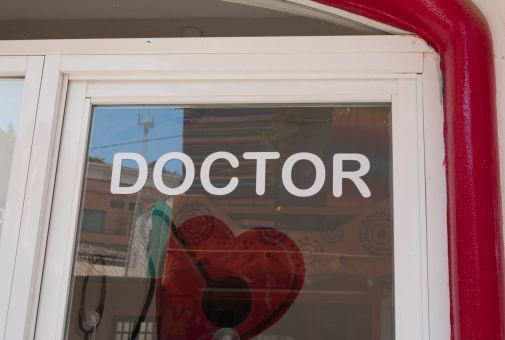
But advocates say the law has a long way to go to make trans men and women visible in a system that makes them invisible
By Angela Woodall
Not long ago, Tiffany Woods received a letter from her doctor that it was time to have a regular cancer screening. Millions of women receive similar notices for cervical cancer prevention every year. Only Woods was born a man so a prostate screening would be more appropriate and medical necessary, even if she had fully transitioned to female physically.
Her experience is a common one for transgender men and women who have complex health care needs that go unrecognized, in part because the doctor’s office has rarely been a safe environment for them and in part because the way the system is designed makes them invisible.
“There is no place in the system for us,” Woods said.
She is the transgender program manager at the Fremont-based Tri-City Health Center’s TransVision clinic. So she is comfortable speaking up. Many others are not.
Sometimes trans people avoid care out of fear they will lose their job if their employers find out about they are transgender. The Affordable Care Act promises to keep that from happening by making it illegal for insurers to turn people away because of their sexual orientation or gender identity. And, among other things, they cannot deny coverage because a pre-existing health condition, such as HIV/AIDS, cancer or mental health concerns.
“That’s a huge step forward,” said Health and Human Services chief Kathleen Sebelius during a September 2013 press conference to announce outreach efforts to the LGBT community. The centerpiece of those efforts is Out2Enroll, a website aimed at lesbian, gay, bisexual and transgender people.
Advocates like Woods agree with Sebelius about the magnitude of the law. But there is a long way to go, as Woods put it, echoing concerns among many in the community.
“We need to make sure the Affordable Care Act is effective for everyone,” she said.
That takes data, she added, something the government lacks about transgender people.
As far back as 2010, an Institute of Medicine (IOM) report about the health of lesbian, gay, bisexual and transgender adults recommended collecting data on gender identity in electronic health records. However, electronic records, one of the cornerstones of health-care reform, still omit gender identity details, according to the World Professional Association for Transgender Health, an association that publishes recognized standards for the care of transgender and gender-variant people.
In contrast, TransVision forms are extensive and include fields for preferred name, legal name, preferred pronouns and all options for gender identity. But the details are lost when they try to enter the information into standard hospital records.
The government has formally committed to eliminating health disparities affecting the LGBT community and is beginning to recognize their lack of accurate, reliable data can prevent them from getting even routine exams that can save lives and reduce the burden of health care costs. For example, a mammography is recommended for trans men even if they had chest reconstructive surgery, because some breast tissue may remain after the surgery. In addition, HIV/AIDS, heart disease, diabetes and other conditions don’t go away just because someone is trans.
Agencies first have to learn how to tailor efforts to a group for which violence, harassment and denial of service are common. Nearly 20 percent of the 6,500 people in a National Center for Transgender Equality and National Gay and Lesbian Task Force survey reported being denied medical service. If medical providers were aware of the patient’s transgender status, the likelihood of that person experiencing discrimination increased, according to the report. Half of the respondents reported having to teach their medical providers about transgender care. Just under three-quarters attempted to avoid discrimination by hiding their gender or gender transition, and half did so by delaying their gender transition. Female-to-male respondents reported higher rates of unequal treatment than male-to-female respondents. Latino and Latina respondents reported the highest rate of unequal treatment of any racial category: 32 percent by a doctor or hospital and 19 percent in both emergency rooms and mental health clinics.
“People are afraid of what they don’t know,” said Roman Flintroy, a 35-year-old transgender man who recently had a hysterectomy to prevent a tumor from spreading.
Flintroy had to insist on being addressed as male, he said, “Otherwise, they’ll never learn.”
Calling a transgender patient by the wrong pronoun can affect the relationship between the patient and the provider. That same mistake in a crowded reception room can put patients at risk for verbal as well as physical abuse from other patients in the waiting area. “Training is happening but obviously it hasn’t reached across the board yet,” Flintroy said. “We can’t be afraid forever, especially when it comes to health.”
Resources also are becoming more available to support medical professionals to develop the medical and cultural competence they need to work with transgender patients, said Anand Kaira of the Transgender Law Center in Oakland.
The center is working with Covered California to enroll people in the LGBT community who need health insurance. Their involvement is critical to overcoming the deep mistrust that exists among transgender people that the insurance plans available will fit their needs and that the people helping them navigate the information are knowledgable and culturally sensitive enough to help.
Lyon-Martin Health Services in San Francisco, Trans Vision in Fremont and the Center of Excellence for Transgender Health at the University of California, San Francisco are a few of the organizations trying to educate the public.
“So the information is there,” Kaira said. But, he added, it will take people speaking out and challenging discrimination to change the system. Now, with the Affordable Act, he said, “There is legal standing to do it.”







You must be logged in to post a comment.